 Now, we all know that the probability of tossing a coin and getting a head is the same as tossing a coin and getting a tail. But this does not mean that if we get a head on the first toss we will get a tail on the second. The chances are equal on each toss of the coin, independent of what happened on the toss before. It is quite possible to have a run of heads up to 4 or 5 or more in a row.
Now, we all know that the probability of tossing a coin and getting a head is the same as tossing a coin and getting a tail. But this does not mean that if we get a head on the first toss we will get a tail on the second. The chances are equal on each toss of the coin, independent of what happened on the toss before. It is quite possible to have a run of heads up to 4 or 5 or more in a row.
The first worksheet explores this idea. It is important to get your children to write down their predictions before they start, carry out the coin tossing and then to compare the prediction to the results. Ask questions such as “If we carried out the coin tossing again would we get the same results?”
The second worksheet explore the same idea, but this time with even or odd numbers on a die. There predictions may well be biased as a result of what they think has happened to them when playing dice games: “I never get a six….”
Again it is unlikely (but by no means impossible) that after 50 throws of a die that 25 odd and 25 even numbers are actually thrown, but as a prediction this would be excellent.
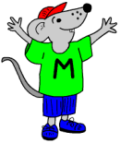 Doubling and halving can be a very effective way of working out quite difficult number problems in your head. These two free maths worksheets look at this skill.
Doubling and halving can be a very effective way of working out quite difficult number problems in your head. These two free maths worksheets look at this skill. A couple of free maths worksheets for older children in primary school. They will need to have a good idea of time, a calculator handy and a pretty good mathematical brain to answer these questions. There is usually more than one way to tackle problems such as these and it is worthwhile discussing with your child why they are taking a particular approach.
A couple of free maths worksheets for older children in primary school. They will need to have a good idea of time, a calculator handy and a pretty good mathematical brain to answer these questions. There is usually more than one way to tackle problems such as these and it is worthwhile discussing with your child why they are taking a particular approach.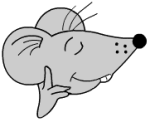 By year 6 children should be able to read and write very large numbers, up to millions, as well as negative numbers. Many, however, find this very challenging, as indeed do many adults.
By year 6 children should be able to read and write very large numbers, up to millions, as well as negative numbers. Many, however, find this very challenging, as indeed do many adults. How big is a tonne?
How big is a tonne?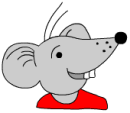 One of the most powerful tools children can have at their fingertips is the ability to double and halve numbers in their heads. These two maths worksheets look at doubling and halving 3-digit numbers.
One of the most powerful tools children can have at their fingertips is the ability to double and halve numbers in their heads. These two maths worksheets look at doubling and halving 3-digit numbers.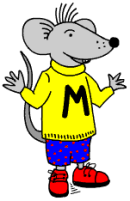 Here are some of the hardest types of questions facing primary school children. The first page is called single step operations: in other words only one thing has to be done to reach the answer. This, however, is not strictly true as, for instance, children may have to convert from hours and minutes to minutes before completing the operation or carry the same operation out several times to reach the answer.
Here are some of the hardest types of questions facing primary school children. The first page is called single step operations: in other words only one thing has to be done to reach the answer. This, however, is not strictly true as, for instance, children may have to convert from hours and minutes to minutes before completing the operation or carry the same operation out several times to reach the answer. This worksheet looks easier than it really is. To answer the questions correctly children need a really good understanding of the properties of 2-D shapes, including the diagonals. Kite, parallelogram, rhombus and trapezium are all shown. They should also be familiar with the term adjacent. If they can do this page then they are doing really well!
This worksheet looks easier than it really is. To answer the questions correctly children need a really good understanding of the properties of 2-D shapes, including the diagonals. Kite, parallelogram, rhombus and trapezium are all shown. They should also be familiar with the term adjacent. If they can do this page then they are doing really well!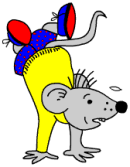 This is about as hard as it gets when adding in your head. Anything harder it would be expected that written methods would be used. When adding two amounts such as £2.47 + £3.53 in your head most people begin with the pounds – the opposite of written methods. I would look at this sum and add the pounds and ten pences making £5.90 then add on the units, 7 first making £5.97 then the 3p making £6.00
This is about as hard as it gets when adding in your head. Anything harder it would be expected that written methods would be used. When adding two amounts such as £2.47 + £3.53 in your head most people begin with the pounds – the opposite of written methods. I would look at this sum and add the pounds and ten pences making £5.90 then add on the units, 7 first making £5.97 then the 3p making £6.00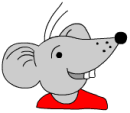 Tables should be well and truly known by now. Unfortunately this is very often not the case. Children need constant reinforcement and practice with their tables. Square numbers are also meant to be known, such as the square of 11. Knowledge of tables will help with most of these but not the larger squares. It is always a good idea to look at a tables square and note the way the square numbers take a diagonal path across the table.
Tables should be well and truly known by now. Unfortunately this is very often not the case. Children need constant reinforcement and practice with their tables. Square numbers are also meant to be known, such as the square of 11. Knowledge of tables will help with most of these but not the larger squares. It is always a good idea to look at a tables square and note the way the square numbers take a diagonal path across the table.